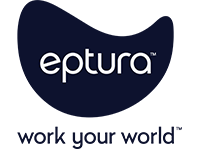In episode 362, host Mike Petrusky speaks with Kyle de Bruin, Managing Director at Leesman, a research firm that measures and analyzes employee experiences at work. Mike asks Kyle about how high-performance offices deliver great employee experiences, and they review lessons learned from the past five years of workplace change.
They note that the lack of variety in office design is a significant challenge, as employees are staying at their desks due to increased video calls and the need for private conversations. Kyle believes that the facility management and corporate real estate industry is data-rich but insights-poor, so he hopes AI advancements can help organize and analyze unstructured data. Mike and Kyle agree that the value of real estate assets shouldn’t solely be measured by occupancy rates and that workplace leaders should also create spaces where employees can focus and be productive.
Agenda
- Latest research and insights from Leesman on the current state of workplaces, particularly in the context of hybrid working and the challenges and opportunities it presents
- Role of facility management leaders in the future of the workplace and the importance of data-driven decision-making.
What you need to know: Workplace takeaways
Takeaway 1: Workplace dynamics have significantly shifted in the past five years, increasing the need for high-performance offices to compete with the average home office.
As part of its benchmarking practice, Leesman calculates a workplace effectiveness score called the Leesman Index (LMI), measured on a scale from 0 to 100. Kyle shared that in Leesman’s analysis, the average home office outperformed the average corporate office by 10 points on the index. This significant gap indicated that employees were having a better experience working from home, which posed a challenge for organizations trying to bring employees back to the office.
He further explained that high-performance offices were on par with the average home in terms of employee satisfaction. “There’s only 4 things that sit outside of that, which are like specialist equipment and things that the office supports better client engagements, etc.,” he noted. The key realization was that employees experienced a high level of support for most activities at home, which forced organizations to rethink their office design and functionality to provide a comparable or better experience.
Kyle emphasized the importance of addressing these issues to create a more engaging and productive workplace. “If you have an outstanding office, you need to have an outstanding office. And if you’ve got an average office, your employees are already compromised on a massive scale,” he said. This takeaway underscores the need for facility management and corporate real estate leaders to focus on enhancing office environments to meet or exceed the standards set by home offices.
Takeaway 2: Office design and employee behavior need to align to maximize the effectiveness of the workplace
Kyle highlights a recurring issue in modern workplaces: a misalignment between the design of office spaces and how employees actually use them. He explains, “The design looks great. I’ve looked at the profiles of the employees using that space, and it makes sense. The design seems to have the right allocation of work settings based on the data. But what’s happening is people are sitting in call booths doing what we call individual focus work, and there’s people having calls out in the open plan space.”
This disconnect often results in employees using spaces in unintended ways, increasing noise and distractions. The rise of hybrid work has only intensified this problem, especially with the growing reliance on video and audio communication. According to Kyle, “There are certain things that home does brilliantly: connecting you really quickly to people all around the world and your organization, and having private conversations or confidential discussions.”
Another major challenge is the lack of variety in office settings—something that has long differentiated high-performance spaces from average ones. Kyle points out that the limited variety is becoming a larger issue, as employees need spaces suited for different tasks.
To address these issues, Kyle encourages facility managers and corporate real estate leaders to rethink office design and provide a broader range of work settings. He urges them to educate employees on how to use these settings effectively and view this moment as an opportunity: “Maximize the opportunity we have in front of us, because we may not have a moment like this again.”
Takeaway 3: Data and AI are becoming essential tools for facility management and corporate real estate leaders to make informed decisions and drive innovation
Kyle also stresses the growing role of data and AI in shaping the post-pandemic workplace. “Data is clearly on everyone’s agenda. I think having a clear data strategy is super important. We are data-rich but insights-poor,” he says. With the sheer abundance of data available, advancements in AI offer a powerful way to convert that information into actionable insights.
He also cautions against relying solely on traditional metrics like occupancy rates. “The value of your real estate asset is not just about filling the thing up from a commercial perspective—that may be the trap that we’ve fallen into in the past,” Kyle notes. Instead, organizations should track a broader set of metrics—such as employee satisfaction and productivity—to better articulate workplace value to stakeholders.
Kyle encourages leaders to use data to bring credibility to their recommendations. “Giving the numbers behind the theory, behind the things that you’re thinking, and being able to actually present those to the board is super powerful.” This data-backed approach not only enhances stakeholder trust but also enables better optimization of the workspace for the hybrid work era.
Workplace management insights
- Home environments have outperformed average offices by 10 points on the Leesman Index (LMI), but high-performance offices remain competitive in supporting a range of work activities.
- The biggest challenge in current office design is a lack of variety, which limits the ability to support both focus work and private conversations.
- Employee behavior has shifted toward more sedentary, desk-bound work—a mismatch for many activity-based workplace designs.
- The pandemic has propelled the corporate real estate and facilities industries into the spotlight, offering a unique moment to implement lasting change.
- A clear data strategy is vital to making informed decisions and effectively communicating value to stakeholders.
- Occupancy should no longer be the sole performance metric—focus should also be on employee experience and well-being.
- AI tools will play a crucial role in transforming unstructured data into workplace insights that lead to better planning and employee support.
Take the Eptura™ Podcast Survey for your chance to win swag, read the article that Kyle referenced, and then do a deep dive into more workplace insights by exploring all Workplace Innovator podcast episodes.









